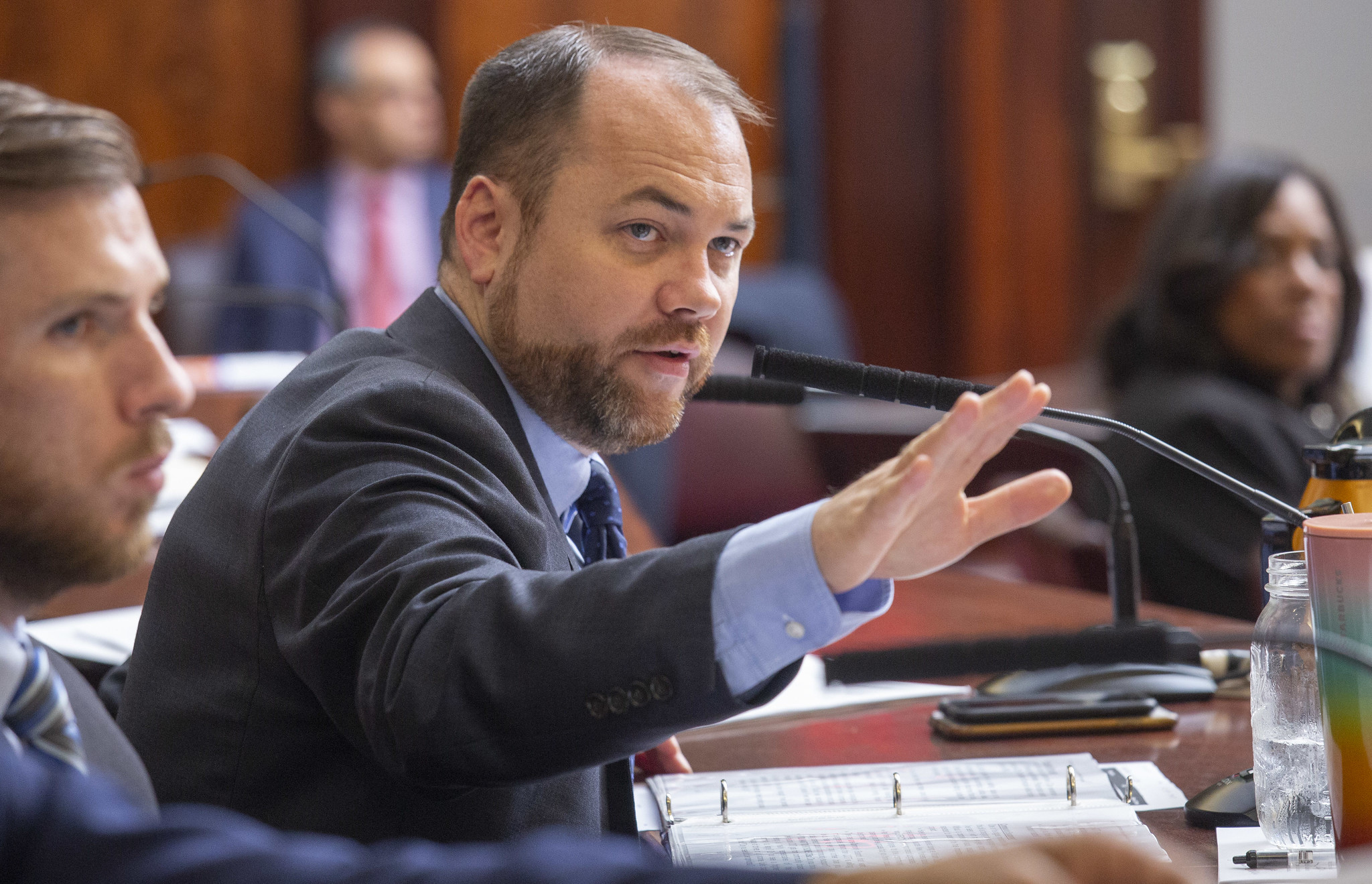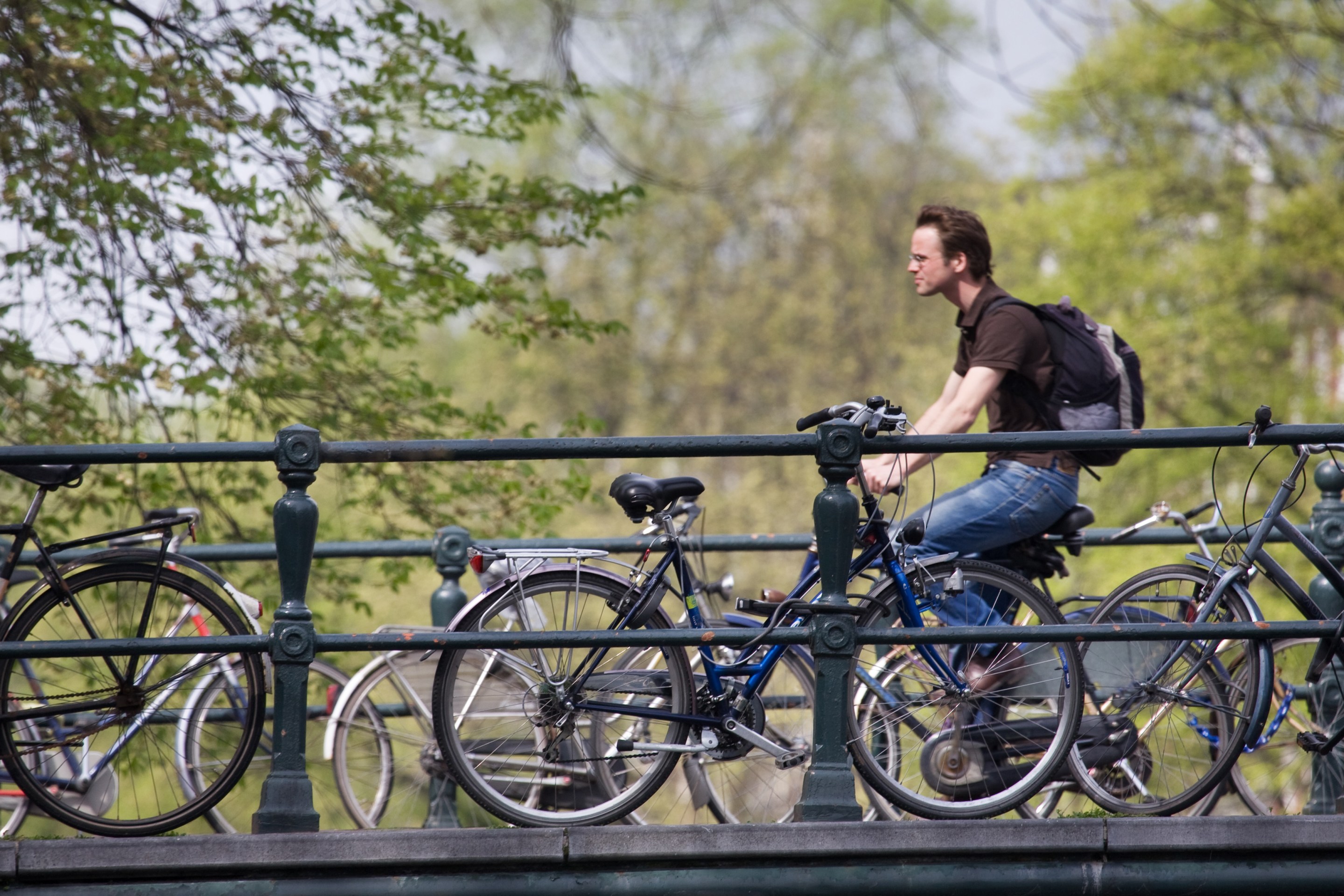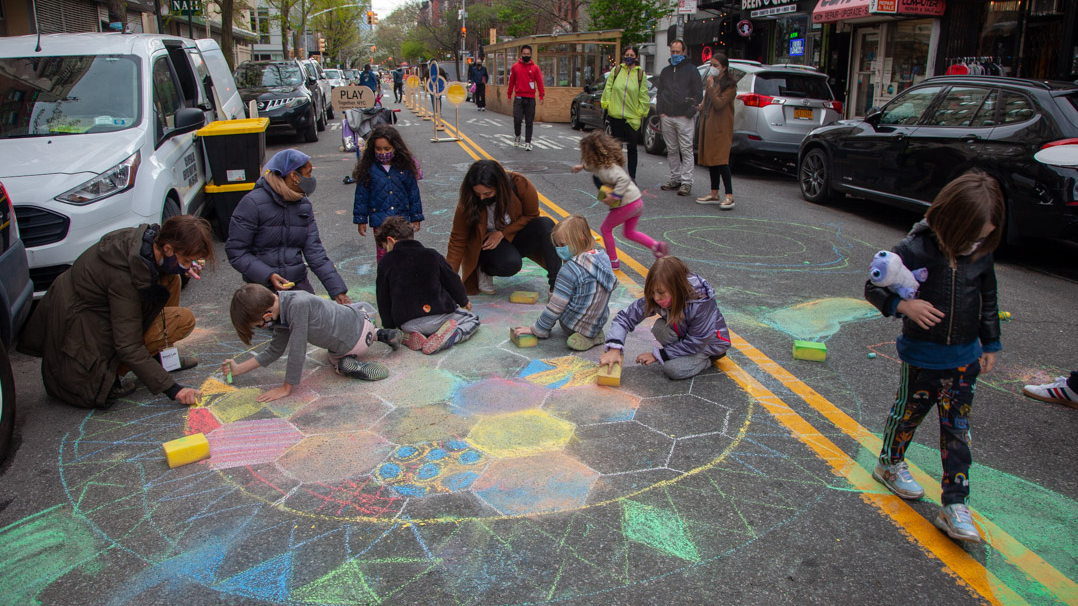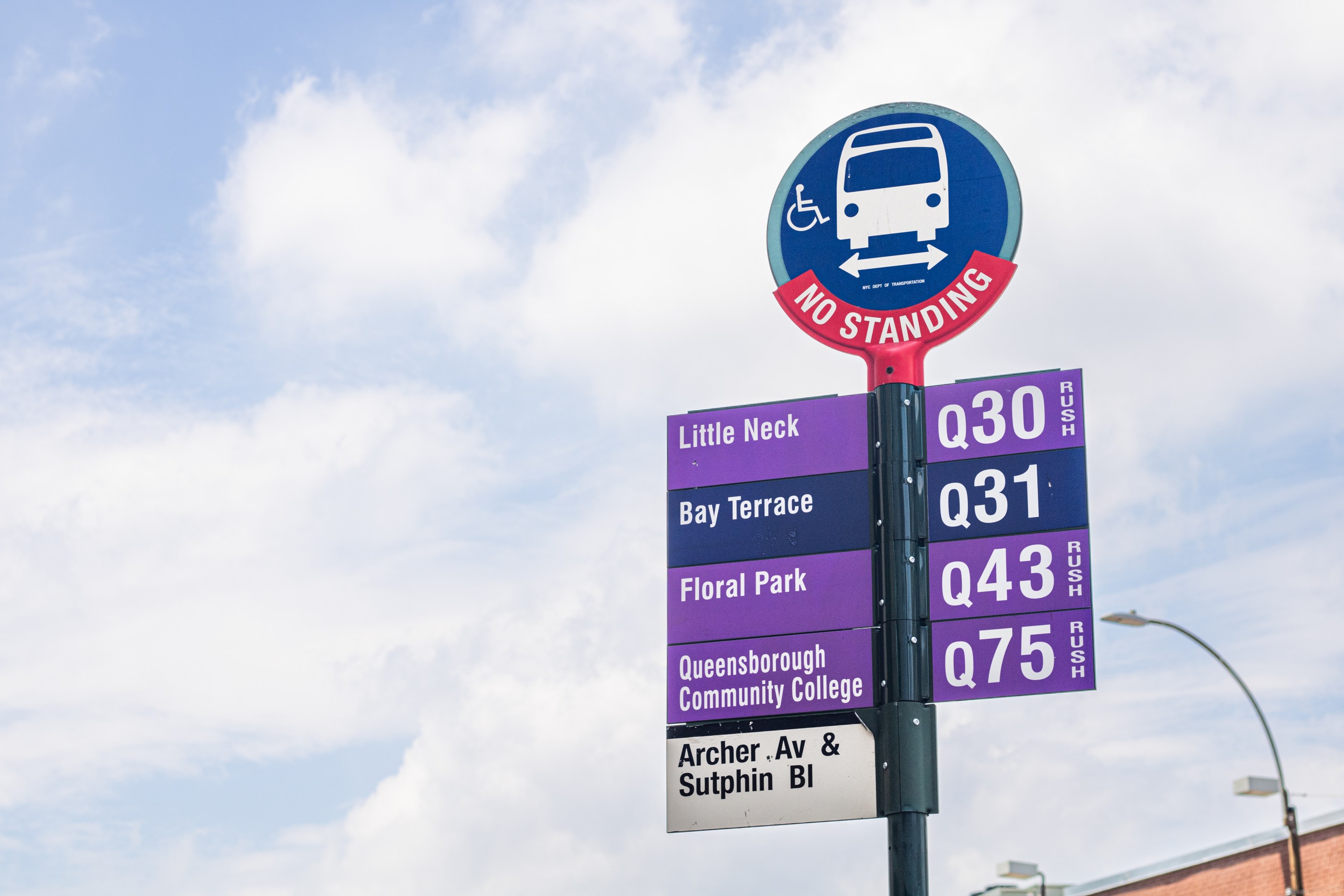Council Speaker Corey Johnson has a problem with free parking.
That outrage was possibly the most telling moment from Wednesday's hearing on Johnson's bill to require the Department of Transportation to better prioritize cyclists and pedestrians. Johnson had been questioning DOT Commissioner Polly Trottenberg about how her agency could do more — is it a funding issue? Is it simply a matter of priorities? Is it simply a lack of focus? — when he pivoted abruptly and asked, "Do we have too much free parking in New York City?"
Many members of the hearing audience — mostly livable streets activists who support the bill — laughed. Indeed, it's an absurd question: Of course there's too much free on-street parking in New York City. Free parking encourages people to drive more, which creates congestion and encourages officials to prioritize car travel lanes over pedestrianization and bike lanes.
But to drivers, there's never enough parking. For them, it's infuriating to hunt for a spot, a difficulty that fuels this bizarre conviction among most car owners that the lanes on both sides of every road were put there for the storage of their property (never mind that the roads were laid out long before cars were invented).
That's where the laughter stemmed from. This is where you're going, Corey? Too much parking? Well, it was nice knowing you.
Trottenberg didn't directly address the "too much" part of the question, deflecting a bit towards her agency's efforts to raise parking rates, to create more commercial loading zones, and flat out removing parking to create bike lanes. But Johnson, who has turned the phrase "break the car culture" from a punchline to an imperative in just six months, was not satisfied.
"Do we have too much free parking?" he asked again.
Trottenberg relented. "There is too much free parking in New York City," she said. "There are three million spaces."
"Three million!" Johnson replied aghast. Imagine, he pointed out, if that space was used for the public.
The exchange was the highlight of a long day of testimony on Johnson's bill, officially Intro 1557. Here are the other takeaways:
So what is this bill anyway?
Johnson's bill would require the DOT to create "a master plan for the use of streets, sidewalks, and pedestrian spaces every five years [that] would prioritize and promote the safety of pedestrians and bicyclists, access to and the use of mass transit, the reduction of traffic congestion and emissions, and improved access to streets, sidewalks, public spaces, and mass transit for individuals with reduced mobility, hearing, or visual impairment."

The bill has specific benchmarks. The first master plan, due by Oct. 1, 2019, requires an average of 30 miles of new dedicated bus lanes per year, the installation of new transit priority signals at 200 intersections per year, the creation of 50 miles of protected bike lane per year, a doubling of the acreage of pedestrian plazas by 2022, and the creation 12 shared streets.
Subsequent master plans would go further, the bill states. There's no mention in the bill of a role for giving communities or community boards, which has consistently been a sticking point between an increasingly restive council and a DOT that eagerly solicits support for projects even from recalcitrant community boards (some of which even sue the city to block safety plans). In fact, the bill requires the DOT to push back on communities by mandating "a public education campaign regarding the benefits of each master plan, including, but not limited to, the impacts on safety, the environment, accessibility, mobility, and the city’s economy."
He said he wants to create "a modern, efficient city" instead of one "stuck in the Robert Moses era." He said, "Cars cannot continue to rule the road. It is not safe and it is not sustainable. Pedestrians deaths are up over 20 percent this year. The number of people killed while riding a bike is up over 60 percent. ?We can do better. We must do better."
Trottenberg did not testify against the bill, per se, but said its passing would require a dramatically different DOT.
"The administration shares the goals that Intro. 1557 puts forth," she said, before adding that "the magnitude of the changes proposed would require a new, re-envisioned public engagement model with fewer mandated requirements for work with the city's 59 community boards, as well as council members, borough presidents, state and federal officials, BIDS, major institutions, civic groups and all the numerous other entities that are affected by DOT's work."
She suggested that the bill would "require tremendous managerial and operational bandwidth."
In short, she said it was too much to take on when the $1-billion agency is already "straining" to fill all the potholes, inspect all the bridges, install all the new speed cameras, fix all of the city's pedestrian ramps, and continue doing all the community engagement it already does. She estimated that the agency budget would need to rise by "billions" if the "master plan" bill became law.
After Trottenberg's testimony, Johnson suggested that it's a small price to pay.

"Aggressive benchmarks are the way to go," he said. "She's reluctant to support the bill because is trying to balance a lot. And I think she believe they have made significant improvements over the last five and a half years. But I was trying to push that this is not just about improvements. It's about really changing the mindset on prioritizing pedestrians and cyclists and mass transit. We all support improvements, but this is about shifting the way we think about moving people around in New York City."
And that explains all those questions about free parking, Johnson explained.
"If you are going to talk about prioritizing cyclists and pedestrians, it means you will have to in certain areas reduce free on-street parking. That's the way it is," he said. "We need to prioritize pedestrians and cyclists over private free automobiles storage in New York City. And that's a painful conversation for some folks because there's so much free parking. Three million free spaces! And it's all the more important to have this conversation now because of the awful tragic increase we're seeing in pedestrian fatalities this year.
"Three million is an astronomical number," Johnson continued. "Imagine the transformative effect on New York City if that space was used for bike lanes and pedestrian plazas and bus lanes. That's breaking the car culture."
So is this the end of community boards?
Johnson pushed back on Trottenberg's continued engagement with community boards, which sometimes improve projects and sometimes block them. In an exchange with reporters after he testimony, Trottenberg reiterated that she wants to keep engaging with the unelected, often out-of-step boards rather than use a checklist on a master plan.
Johnson says she's wrong.
"What Polly said is fair: You do need to do some level of community engagement, but you also can't let communities get in the way of necessary traffic and safety improvements to protect pedestrians and cyclists and prioritize buses and mass transit over private automobiles," he said.
He cited Manhattan Community Board 4 as an example of a street-safety-minded board that improves projects. But admitted such panels are the exception not the rule.
"We don't want to let NIMBYism become paramount in a way that detracts from safety," he said. "By setting these aggressive benchmarks, DOT will have to figure out how to do community engagement in an expedited manner to get the mileage on the bike lanes, to get the mileage on the bus lanes, to get more pedestrianization in parts of the city."
Johnson wants more bike lanes
A substantial part of Johnson's questioning of DOT officials centered on the agency's failure to fully build out the protected bike lane network. Citing a seminal Streetsblog story, he hammered Assistant Commissioner Sean Quinn over the agency's fluid definition of a "protected" bike lane, which includes open space that doesn't actually protect cyclists. And he complained that too much bike infrastructure is merely paint.
"We share the desire to build many protected bike lanes," Trottenberg said. "But all bike infrastructure helps."
"But people are dying," Johnson retorted. He then asked, "Have you sketched out what a full bike network would look like?"
Trottenberg said that the agency had.
"Which safe is it in?" Johnson joked.
Trottenberg's answer, again, was telling: "It's a product in progress. ... We want to work in lock step with local communities to see what the street would actually look like."
Could he go even further?
Street safety activists showed praise on Johnson for his bill — but they want it to go even further.

- Janet Liff of the Neighborhood Empowerment Project said that the bill needs another key benchmark: A metric to ensure that pedestrian and cyclist "level of service" actually improves. It's a play off the DOT's requirement that drivers' "level of service" not be decreased, even when a roadway is being redesigned. "When is a sidewalk too crowed," she asked. "Are people forced off the curb? Is there pedlock? ... If we're setting metrics for the DOT, we have to add qualitative questions."
- Christine Berthet of CHEKPEDS, the Hells Kitchen advocacy group, agreed with Liff, but added that DOT must stop neglecting sidewalks and start treating them as "Walk Lanes” with standard widths and designs.
- Blythe Austin of Families for Safe Streets said the bill "doesn't go far enough" because it doesn't specifically address dangers at intersections, where most pedestrian and cyclist injuries occur. "Imagine how many fewer crashes we would have...if this bill mandated daylighting redesign at all intersections," she said.
- Marco Conner of Transportation Alternatives seconded the need for daylighting. His testimony also called for a benchmark to ensure more bicycle parking and better designs to reduce driver-cyclist conflicts.
Johnson thanked activists for work that "really informs us at the city council." He promised to use the testimony to further "craft this legislation."






